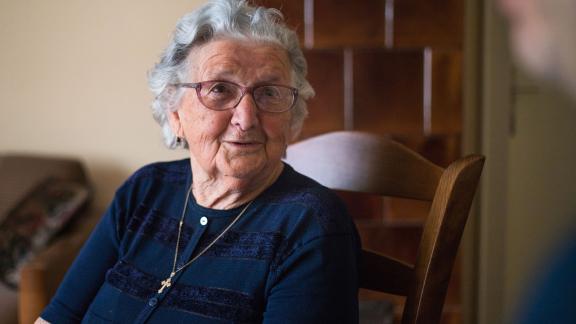Children and young people’s social prescribing service: Stort Valley and Villages PCN

In 2019, practices within Stort Valley and Villages Primary Care Network (PCN) sought a new way to provide mental health support to children and young people at a time when CAMHS and other tier 2 services were overwhelmed. They developed a children and young people’s social prescribing service (CYPSPS) to tackle the wider determinants of health and reduce the number of young people being referred to secondary care by supporting them within primary care.
What the organisation faced
In 2019, presentations for anxiety, self-harm, suicide, eating disorders and problems with alcohol were high, and CAMHS and other tier 2 services were overwhelmed. During this period, 76 per cent of adolescent mental health was presenting through primary care. Many patients, and their families, found the wider mental health system difficult to navigate and, when they were able to get a referral, were placed on lengthy waiting lists. This often led to repeat presentations at practice, negatively impacting the PCN’s capacity to meet wider demand, and patients feeling let down by the system.
What the organisation did
In recognition of these issues, the newly formed Stort Valley and Villages PCN recruited social prescribers to tackle the wider determinants of health that may be affecting patients. PCN clinical director Sian Stanley worked with neighbouring St Albans to design the new service, learning from their existing model. The service became a patient-centred, non-medicalised approach to improving mental health in children and young people. The PCN recruited their first CYP social prescriber (CYPSP) who built connections to any local services, from MIND, to schools, art groups and support for young carers. These relationships did not exist prior to establishing the service, and their development has been crucial to its success. Having scoped the services and built relationships, he also attended sessions run by these local partners in order to fully understand the services he would be referring into.
The service sees patients from 11-25 years old, offering up to six one-to-one sessions with the social prescriber as standard, to create a personalised care plan. Most of these children and young people come in with their parents’ knowledge and support, and risk assessments are in place to safeguard patients under 18 years who wish to access the service without their parents’ knowledge. All patients are risk assessed and referred into the service by a GP.
Patients are referred to organisations including art groups for isolated teens, CAMHS, BEAT (eating disorders services), fitness groups and the Aspire programme from Transitions UK. Once the young person has engaged with their referral organisation, they are no longer booked into appointments but know that the service is available to them if they need it in the future.
The wider team and services
As the service is supported by a multi-disciplinary team (MDT), all cases can be discussed by a selection of ARRS roles (Additional Roles Reimbursement Scheme) and supporting GP, improving overall patient care and allowing them to refer with confidence where necessary. For any patients who also require clinical support, the PCN practice doctors provide supervision and appointments for any young person referred back by the social prescriber.
The MDT includes an occupational therapist who works with the social prescribing service, in addition to her wider work with the PCN, to support young people with traits associated with autism and ADHD. This is not a diagnostic service, but for many who have a diagnosis, are waiting for one, or want support with traits such as sensory overload or trouble concentrating, the service means that they are supported to discover how best to manage these traits.
The MDT members can assist each other with referrals and cases, and are supported by a GP clinical supervisor who can discuss cases and will see any patient referred by the team. This has built a high level of trust in the team and ensures that they are enabled to do their best work for patients.
The service also seeks to engage with the parents where possible, and a mental health coach provides sessions for the parents to educate them on supporting their children with their mental health, addressing any behaviour that may be aggravating their condition, and how to work with their own emotions regarding their situation. Since the mental health coach joined the services they have helped over 80 families.
Results and benefits
- To date, the service has worked with 584 referrals, seeing a wide range of young people, and sending less than 5 per cent through to CAMHS.
- Strain on the wider system has been reduced by keeping patients in primary care.
- Schools have reported improvements in students’ anxiety and performance.
- GP workload has been reduced as repeat presentations for mental health support in young people have decreased.
- Patients referred to eating disorder specialists at the early stages of developing an eating disorder are not presenting at a more advanced stage.
- Children and young people who access the services have reported feeling supported and less isolated.
Overcoming challenges
During the initial stages of service development, there was very little support for the PCN CYSPS from parts of the system that did not understand social prescribing, or thought the PCN was encroaching on work in secondary care and other external organisations. Over time, and through the hard work of the leadership team and social prescriber, they have built positive relationships with local partners and shown that by keeping more patients within primary care, the wider system comes under less pressure and has the time and resources to dedicate to those who need their services.
As mental health problems often require long-term support, the service risked becoming overwhelmed by demand and building long waiting lists. To avoid this, they focused on having a high throughput, referring to as many local groups as possible, and only seeing patients for a few weeks. The need for ongoing care is balanced by ensuring they refer into groups that can provide a long-term support network, as well as keeping patients on a ‘red list’ that allows them to book back in with the team if they need to. In order to keep the team working at their best in the face of high demand, the leadership team ensure they also receive high levels of support.
Takeaway tips
- Build relationships with local organisations that tackle the wider determinants of health including isolation, diet, housing and education.
- Learn from other CYPSPS about the challenges and safeguarding required to run the service.
- Develop a support offer for the families of the children and young people accessing your service. This will improve outcomes for the patient and reduce the risk of other family members presenting with stress or anxiety.
- Make use of ARRS staff, including health coaches and occupational therapists, to deliver a holistic service.
- Don’t try to emulate a long-term counselling service. To keep up with demand, patients must be able to move through the service and begin to be supported elsewhere.
Further information
For more detail on the work in this case study, please contact Sian Stanley, PCN clinical director, at sianstanley@nhs.net
See the Primary Care Network web pages for information on network membership, and learn about the Primary Care Hub app for access to exclusive content and support for primary care networks and GP federations.



